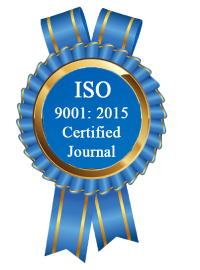| All | Since 2020 | |
| Citation | 172 | 110 |
| h-index | 7 | 5 |
| i10-index | 1 | 0 |
WJERT Citation 
Login
News & Updation
Abstract
DEMONSTRATION OF SOIL SALINITY AND SODICITY REMEDIATION TECHNIQUES USING RICE CROP (ORYZA SATIVA) IN KANO RIVER IRRIGATION SCHEME (KRIS)
*A. U. Bashir, Maina M. M., A. A. Manga, A. Ibrahim, M. D. Zakari, N. M. Nasidi, N. J. Shanono
ABSTRACT
Soil salinity is a huge problem in irrigated fields globally. In KRIS, the salinity problem has been reported over a considerable period and has been found to increase at an alarming rate which greatly affects the soil’s productive capacity. The effect of remediation techniques was assessed through participatory testing and demonstration of soil salinity and sodicity using rice in KRIS. The experimental trial plots were selected based on physical observations, information from the farm owners, and the preliminary soil chemical analysis results. Three (3) sets of experiments were established at 3 different locations that were assessed to be saline, saline-sodic, and sodic conditions,respectively. The treatment materials used were (Gypsum, Rice husk, Millet chaff, and Farmyard Manure) using Randomized Complete Block Design (RCBD) at five distinct levels and a control plot. The results show that the Rice husk, millet chaff, gypsum, and farmyard manure have exhibited different capabilities in reducing the adverse effect of salinity and sodicity. Under all situations (salinity, sodicity, and saline-sodic), millet chaff and rice husk have been performing in improving the growth and yield of rice. Similarly, gypsum has shown a good ability to remedy the sodic soils although it is not affordable and accessible for local farmers. It was observed that millet chaff application at level 2 (8.8 ton/ha) produced the highest yield of 4.75 ton/ha. Also, the highest yield next to Millet Chaff was Rice Husk at level 1 (6.8 tons/ha) produced 4.40 tons/ha. The study found that rice husk and millet chaff have higher efficacy in suppressing the effect of saline, sodic and saline-sodic soils. Thus, the application of these materials should be encouraged and enlighten the farmers at KRIS to adopt them for the control of soil salinity and sodicity problem.
[Full Text Article] [Download Certificate]
